Top 5 Tanzania wildlife experiences
Tanzania is the quintessential African safari destination. Vast swathes of land are given over to national parks and game reserves, where animals roam freely through grassland, marshes, rivers and jungle. The Great Migration sees the Serengeti burst to life as millions of wildebeest move across the land, watched hungrily by lion, cheetah, leopard, wild dog and crocodiles. From remote camps you can head out on foot to track chimpanzees. In the Selous Game Reserve, boats take you along the Rufiji River, passing hippo, yellow-billed storks and colobus monkeys. Tanzania is a country you can return to time and again and still see something new. Below are five of its best wildlife experiences.
The Great Migration in Serengeti National Park
The Great Migration sees huge herds of wildebeest, zebra and gazelle follow the path of the rain between Kenyas Masai Mara and Serengeti National Park, in the north of Tanzania. To see the phenomenon in the Serengeti, youll need to visit between November and July. Wildebeest have their young here between December and March, and you can watch the calves take their first tentative steps and graze on the plains.
 Arguably the most defining moment during the migration are the treacherous river crossings. The herds often wait for weeks before plucking up the courage to swim across the crocodile-infested waters. While luck plays a large role, your best chance of witnessing a crossing is visiting the northern Serengeti in July, when herds begin to cross the Mara River.
The vast number of wildebeest attracts big cats like lion, leopard and cheetah, who rarely go unfed. Staying in Namiri Plains, in central Serengeti, presents fantastic opportunities for big cat sightings. Now a tented camp, its location was a cheetah research base for 20 years, so the surrounding area has large densities of cheetah and lion.
Secluded river safaris in Selous Game Reserve
One of Tanzanias largest protected areas, Selous is a quiet wilderness that feels completely undiscovered. Situated in the south of the country, its home to Africas biggest populations of buffalo and lion, as well as healthy numbers of leopard and wild dog.
Arguably the most defining moment during the migration are the treacherous river crossings. The herds often wait for weeks before plucking up the courage to swim across the crocodile-infested waters. While luck plays a large role, your best chance of witnessing a crossing is visiting the northern Serengeti in July, when herds begin to cross the Mara River.
The vast number of wildebeest attracts big cats like lion, leopard and cheetah, who rarely go unfed. Staying in Namiri Plains, in central Serengeti, presents fantastic opportunities for big cat sightings. Now a tented camp, its location was a cheetah research base for 20 years, so the surrounding area has large densities of cheetah and lion.
Secluded river safaris in Selous Game Reserve
One of Tanzanias largest protected areas, Selous is a quiet wilderness that feels completely undiscovered. Situated in the south of the country, its home to Africas biggest populations of buffalo and lion, as well as healthy numbers of leopard and wild dog.
 Staying in Selous, youve the chance to step away from 4×4 game drives and focus on alternative safari experiences. Tracking animals on foot with an expert guide opens your eyes to smaller creatures you may not otherwise spot and brings you closer to nature than sitting in a vehicle.
You can also go out on boat trips along the Rufiji River, which runs through the middle of the reserve. From the water, you may see baboons sitting on the banks, hippo cooling off from the heat and crocodiles basking in the sun.
Giraffe stop to quench their thirst, and blue samango and black and white colobus monkeys rustle in the trees. Youll also spot many bird species sitting on low-hanging branches, including vibrant malachite kingfishers and finch-like weavers making nests in the high riverbanks.
Lake Manze Camp offers authenticity and comfort in the heart of the reserve. Animals are free to roam through the camp, situated on the shores of Lake Manze, and each tent has a private patio where you can sit and watch the wildlife after a boat safari, game drive or bush walk.
Elephant herds in Tarangire National Park
Up in the northeast of Tanzania, just south of Lake Manyara, Tarangire is best visited during the dry season (August to October). This is when the Tarangire River becomes the areas only major source of water, attracting thirsty animals from across the Maasai Steppe.
Staying in Selous, youve the chance to step away from 4×4 game drives and focus on alternative safari experiences. Tracking animals on foot with an expert guide opens your eyes to smaller creatures you may not otherwise spot and brings you closer to nature than sitting in a vehicle.
You can also go out on boat trips along the Rufiji River, which runs through the middle of the reserve. From the water, you may see baboons sitting on the banks, hippo cooling off from the heat and crocodiles basking in the sun.
Giraffe stop to quench their thirst, and blue samango and black and white colobus monkeys rustle in the trees. Youll also spot many bird species sitting on low-hanging branches, including vibrant malachite kingfishers and finch-like weavers making nests in the high riverbanks.
Lake Manze Camp offers authenticity and comfort in the heart of the reserve. Animals are free to roam through the camp, situated on the shores of Lake Manze, and each tent has a private patio where you can sit and watch the wildlife after a boat safari, game drive or bush walk.
Elephant herds in Tarangire National Park
Up in the northeast of Tanzania, just south of Lake Manyara, Tarangire is best visited during the dry season (August to October). This is when the Tarangire River becomes the areas only major source of water, attracting thirsty animals from across the Maasai Steppe.
 Youll have excellent views of the buffalo, giraffe, zebra, wildebeest and warthog congregating in large numbers along the riverbanks. These, in turn, attract predators like lion, cheetah and hyena. Its also one of the best areas in Tanzania for birdwatching, with over 550 species recorded around the river, grasslands, woodlands and lush swamps.
Most notably, the river draws huge herds of elephant, sometimes 100 strong. Watching the elephant drink and splash around in the water provides endless entertainment. A number of camps have been set up with views directly over the river or waterholes, so you can also watch elephant and other wildlife from your deck.
Olivers Camp is situated close to the Minyonyo Pools and Silale Swamps in a remote part of the park. Each luxurious tent has its own deck where you can sit and watch for passing wildlife. Activities on offer include game drives, night drives and walking safaris.
Black rhino spotting in the Ngorongoro Crater
Created some three million years ago when a volcano erupted and collapsed in on itself, the Ngorongoro Crater is the largest intact, unflooded caldera in the world. Stretching 20 km across, sinking 600 m deep and spanning a total area of 300 sq km, its situated in the wider Ngorongoro Conservation Area, which borders the south of the Serengeti.
Youll have excellent views of the buffalo, giraffe, zebra, wildebeest and warthog congregating in large numbers along the riverbanks. These, in turn, attract predators like lion, cheetah and hyena. Its also one of the best areas in Tanzania for birdwatching, with over 550 species recorded around the river, grasslands, woodlands and lush swamps.
Most notably, the river draws huge herds of elephant, sometimes 100 strong. Watching the elephant drink and splash around in the water provides endless entertainment. A number of camps have been set up with views directly over the river or waterholes, so you can also watch elephant and other wildlife from your deck.
Olivers Camp is situated close to the Minyonyo Pools and Silale Swamps in a remote part of the park. Each luxurious tent has its own deck where you can sit and watch for passing wildlife. Activities on offer include game drives, night drives and walking safaris.
Black rhino spotting in the Ngorongoro Crater
Created some three million years ago when a volcano erupted and collapsed in on itself, the Ngorongoro Crater is the largest intact, unflooded caldera in the world. Stretching 20 km across, sinking 600 m deep and spanning a total area of 300 sq km, its situated in the wider Ngorongoro Conservation Area, which borders the south of the Serengeti.
 Within the craters steep, rainforest-covered walls is a dense wildlife population of around 25,000 animals, including the endangered black rhino, lion, elephant, wildebeest, hippo, buffalo, hyena, leopard, cheetah, zebra and many birds. As the walls act as a natural enclosure and water is usually plentiful, most animals stay in the crater year-round.
During the green season (December to April), thousands of flamingos congregate around Lake Magadi within the crater, creating a sea of pink. However, its the elusive black rhino that are the areas main draw. Sightings arent guaranteed, but this is the best place to spot them in Tanzania.
Predominantly solitary creatures, you can head out with a guide to track rhino on foot, watching from a distance as they forage and chew on leafy plants.
Camps and lodges in the area offer both game drives and walking safaris into the crater to see the rhino and other wildlife. The luxurious Ngorongoro Crater Lodge is set on the craters rim, looking out on sweeping views over the crater floor. Staying here, youll have easy access to the crater, with the chance to explore it before others arrive. With a good pair of binoculars, you can view wildlife from your veranda.
Chimpanzee tracking in Mahale Mountains National Park
In the far west of Tanzania, the Mahale Mountains slope up dramatically from the blue water and palm-fringed beaches of Lake Tanganyika. This is an incredibly wild, remote area, where dense montane forest provides a habitat to snuffling warthog, vibrant bee-eaters and shrieking monkeys.
Within the craters steep, rainforest-covered walls is a dense wildlife population of around 25,000 animals, including the endangered black rhino, lion, elephant, wildebeest, hippo, buffalo, hyena, leopard, cheetah, zebra and many birds. As the walls act as a natural enclosure and water is usually plentiful, most animals stay in the crater year-round.
During the green season (December to April), thousands of flamingos congregate around Lake Magadi within the crater, creating a sea of pink. However, its the elusive black rhino that are the areas main draw. Sightings arent guaranteed, but this is the best place to spot them in Tanzania.
Predominantly solitary creatures, you can head out with a guide to track rhino on foot, watching from a distance as they forage and chew on leafy plants.
Camps and lodges in the area offer both game drives and walking safaris into the crater to see the rhino and other wildlife. The luxurious Ngorongoro Crater Lodge is set on the craters rim, looking out on sweeping views over the crater floor. Staying here, youll have easy access to the crater, with the chance to explore it before others arrive. With a good pair of binoculars, you can view wildlife from your veranda.
Chimpanzee tracking in Mahale Mountains National Park
In the far west of Tanzania, the Mahale Mountains slope up dramatically from the blue water and palm-fringed beaches of Lake Tanganyika. This is an incredibly wild, remote area, where dense montane forest provides a habitat to snuffling warthog, vibrant bee-eaters and shrieking monkeys.
 Around 1,000 chimpanzees are found in the expanse of trees, making this the best place to see them in the whole of Africa. Living in troops, theyre some of the continents only survivors in the wild.
One of the troops, while still wild, has been habituated to humans. You can head out with a guide to track it, hiking through the forest along sloping tracks until you hear chimpanzees calls. You then spend time observing them grooming, drinking and playing, as you crouch just a short distance away.
The park is only accessible by charter flight, after which youll take a boat to your camp. Very few permits for tracking the chimpanzees are available each year, so the whole experience feels exclusive and intimate.
The proximity of the lake also means you can spend time on the beach, go kayaking or snorkel amongst the hundreds of cichlid fish living in the water.
Craig Burkinshaw is Founder of Audley Travel.
If you would like to be a guest blogger on A Luxury Travel Blog in order to raise your profile, please contact us.
Around 1,000 chimpanzees are found in the expanse of trees, making this the best place to see them in the whole of Africa. Living in troops, theyre some of the continents only survivors in the wild.
One of the troops, while still wild, has been habituated to humans. You can head out with a guide to track it, hiking through the forest along sloping tracks until you hear chimpanzees calls. You then spend time observing them grooming, drinking and playing, as you crouch just a short distance away.
The park is only accessible by charter flight, after which youll take a boat to your camp. Very few permits for tracking the chimpanzees are available each year, so the whole experience feels exclusive and intimate.
The proximity of the lake also means you can spend time on the beach, go kayaking or snorkel amongst the hundreds of cichlid fish living in the water.
Craig Burkinshaw is Founder of Audley Travel.
If you would like to be a guest blogger on A Luxury Travel Blog in order to raise your profile, please contact us.
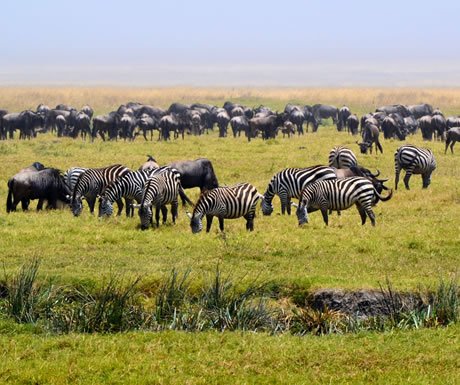 Arguably the most defining moment during the migration are the treacherous river crossings. The herds often wait for weeks before plucking up the courage to swim across the crocodile-infested waters. While luck plays a large role, your best chance of witnessing a crossing is visiting the northern Serengeti in July, when herds begin to cross the Mara River.
The vast number of wildebeest attracts big cats like lion, leopard and cheetah, who rarely go unfed. Staying in Namiri Plains, in central Serengeti, presents fantastic opportunities for big cat sightings. Now a tented camp, its location was a cheetah research base for 20 years, so the surrounding area has large densities of cheetah and lion.
Secluded river safaris in Selous Game Reserve
One of Tanzanias largest protected areas, Selous is a quiet wilderness that feels completely undiscovered. Situated in the south of the country, its home to Africas biggest populations of buffalo and lion, as well as healthy numbers of leopard and wild dog.
Arguably the most defining moment during the migration are the treacherous river crossings. The herds often wait for weeks before plucking up the courage to swim across the crocodile-infested waters. While luck plays a large role, your best chance of witnessing a crossing is visiting the northern Serengeti in July, when herds begin to cross the Mara River.
The vast number of wildebeest attracts big cats like lion, leopard and cheetah, who rarely go unfed. Staying in Namiri Plains, in central Serengeti, presents fantastic opportunities for big cat sightings. Now a tented camp, its location was a cheetah research base for 20 years, so the surrounding area has large densities of cheetah and lion.
Secluded river safaris in Selous Game Reserve
One of Tanzanias largest protected areas, Selous is a quiet wilderness that feels completely undiscovered. Situated in the south of the country, its home to Africas biggest populations of buffalo and lion, as well as healthy numbers of leopard and wild dog.
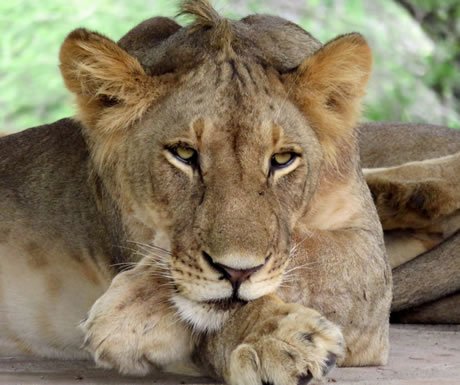 Staying in Selous, youve the chance to step away from 4×4 game drives and focus on alternative safari experiences. Tracking animals on foot with an expert guide opens your eyes to smaller creatures you may not otherwise spot and brings you closer to nature than sitting in a vehicle.
You can also go out on boat trips along the Rufiji River, which runs through the middle of the reserve. From the water, you may see baboons sitting on the banks, hippo cooling off from the heat and crocodiles basking in the sun.
Giraffe stop to quench their thirst, and blue samango and black and white colobus monkeys rustle in the trees. Youll also spot many bird species sitting on low-hanging branches, including vibrant malachite kingfishers and finch-like weavers making nests in the high riverbanks.
Lake Manze Camp offers authenticity and comfort in the heart of the reserve. Animals are free to roam through the camp, situated on the shores of Lake Manze, and each tent has a private patio where you can sit and watch the wildlife after a boat safari, game drive or bush walk.
Elephant herds in Tarangire National Park
Up in the northeast of Tanzania, just south of Lake Manyara, Tarangire is best visited during the dry season (August to October). This is when the Tarangire River becomes the areas only major source of water, attracting thirsty animals from across the Maasai Steppe.
Staying in Selous, youve the chance to step away from 4×4 game drives and focus on alternative safari experiences. Tracking animals on foot with an expert guide opens your eyes to smaller creatures you may not otherwise spot and brings you closer to nature than sitting in a vehicle.
You can also go out on boat trips along the Rufiji River, which runs through the middle of the reserve. From the water, you may see baboons sitting on the banks, hippo cooling off from the heat and crocodiles basking in the sun.
Giraffe stop to quench their thirst, and blue samango and black and white colobus monkeys rustle in the trees. Youll also spot many bird species sitting on low-hanging branches, including vibrant malachite kingfishers and finch-like weavers making nests in the high riverbanks.
Lake Manze Camp offers authenticity and comfort in the heart of the reserve. Animals are free to roam through the camp, situated on the shores of Lake Manze, and each tent has a private patio where you can sit and watch the wildlife after a boat safari, game drive or bush walk.
Elephant herds in Tarangire National Park
Up in the northeast of Tanzania, just south of Lake Manyara, Tarangire is best visited during the dry season (August to October). This is when the Tarangire River becomes the areas only major source of water, attracting thirsty animals from across the Maasai Steppe.
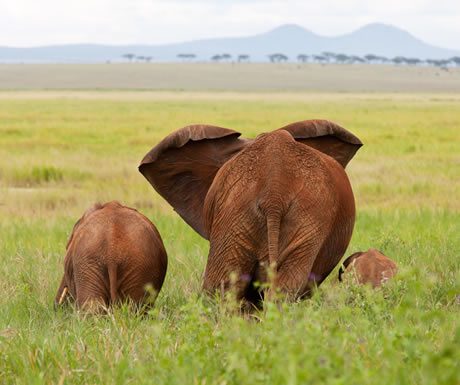 Youll have excellent views of the buffalo, giraffe, zebra, wildebeest and warthog congregating in large numbers along the riverbanks. These, in turn, attract predators like lion, cheetah and hyena. Its also one of the best areas in Tanzania for birdwatching, with over 550 species recorded around the river, grasslands, woodlands and lush swamps.
Most notably, the river draws huge herds of elephant, sometimes 100 strong. Watching the elephant drink and splash around in the water provides endless entertainment. A number of camps have been set up with views directly over the river or waterholes, so you can also watch elephant and other wildlife from your deck.
Olivers Camp is situated close to the Minyonyo Pools and Silale Swamps in a remote part of the park. Each luxurious tent has its own deck where you can sit and watch for passing wildlife. Activities on offer include game drives, night drives and walking safaris.
Black rhino spotting in the Ngorongoro Crater
Created some three million years ago when a volcano erupted and collapsed in on itself, the Ngorongoro Crater is the largest intact, unflooded caldera in the world. Stretching 20 km across, sinking 600 m deep and spanning a total area of 300 sq km, its situated in the wider Ngorongoro Conservation Area, which borders the south of the Serengeti.
Youll have excellent views of the buffalo, giraffe, zebra, wildebeest and warthog congregating in large numbers along the riverbanks. These, in turn, attract predators like lion, cheetah and hyena. Its also one of the best areas in Tanzania for birdwatching, with over 550 species recorded around the river, grasslands, woodlands and lush swamps.
Most notably, the river draws huge herds of elephant, sometimes 100 strong. Watching the elephant drink and splash around in the water provides endless entertainment. A number of camps have been set up with views directly over the river or waterholes, so you can also watch elephant and other wildlife from your deck.
Olivers Camp is situated close to the Minyonyo Pools and Silale Swamps in a remote part of the park. Each luxurious tent has its own deck where you can sit and watch for passing wildlife. Activities on offer include game drives, night drives and walking safaris.
Black rhino spotting in the Ngorongoro Crater
Created some three million years ago when a volcano erupted and collapsed in on itself, the Ngorongoro Crater is the largest intact, unflooded caldera in the world. Stretching 20 km across, sinking 600 m deep and spanning a total area of 300 sq km, its situated in the wider Ngorongoro Conservation Area, which borders the south of the Serengeti.
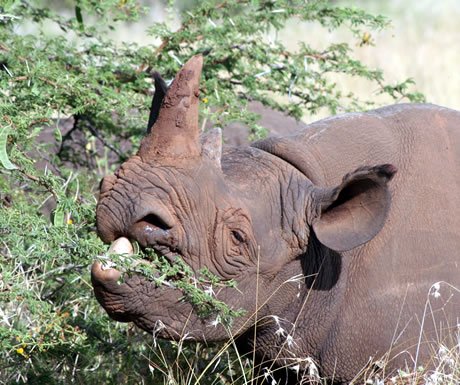 Within the craters steep, rainforest-covered walls is a dense wildlife population of around 25,000 animals, including the endangered black rhino, lion, elephant, wildebeest, hippo, buffalo, hyena, leopard, cheetah, zebra and many birds. As the walls act as a natural enclosure and water is usually plentiful, most animals stay in the crater year-round.
During the green season (December to April), thousands of flamingos congregate around Lake Magadi within the crater, creating a sea of pink. However, its the elusive black rhino that are the areas main draw. Sightings arent guaranteed, but this is the best place to spot them in Tanzania.
Predominantly solitary creatures, you can head out with a guide to track rhino on foot, watching from a distance as they forage and chew on leafy plants.
Camps and lodges in the area offer both game drives and walking safaris into the crater to see the rhino and other wildlife. The luxurious Ngorongoro Crater Lodge is set on the craters rim, looking out on sweeping views over the crater floor. Staying here, youll have easy access to the crater, with the chance to explore it before others arrive. With a good pair of binoculars, you can view wildlife from your veranda.
Chimpanzee tracking in Mahale Mountains National Park
In the far west of Tanzania, the Mahale Mountains slope up dramatically from the blue water and palm-fringed beaches of Lake Tanganyika. This is an incredibly wild, remote area, where dense montane forest provides a habitat to snuffling warthog, vibrant bee-eaters and shrieking monkeys.
Within the craters steep, rainforest-covered walls is a dense wildlife population of around 25,000 animals, including the endangered black rhino, lion, elephant, wildebeest, hippo, buffalo, hyena, leopard, cheetah, zebra and many birds. As the walls act as a natural enclosure and water is usually plentiful, most animals stay in the crater year-round.
During the green season (December to April), thousands of flamingos congregate around Lake Magadi within the crater, creating a sea of pink. However, its the elusive black rhino that are the areas main draw. Sightings arent guaranteed, but this is the best place to spot them in Tanzania.
Predominantly solitary creatures, you can head out with a guide to track rhino on foot, watching from a distance as they forage and chew on leafy plants.
Camps and lodges in the area offer both game drives and walking safaris into the crater to see the rhino and other wildlife. The luxurious Ngorongoro Crater Lodge is set on the craters rim, looking out on sweeping views over the crater floor. Staying here, youll have easy access to the crater, with the chance to explore it before others arrive. With a good pair of binoculars, you can view wildlife from your veranda.
Chimpanzee tracking in Mahale Mountains National Park
In the far west of Tanzania, the Mahale Mountains slope up dramatically from the blue water and palm-fringed beaches of Lake Tanganyika. This is an incredibly wild, remote area, where dense montane forest provides a habitat to snuffling warthog, vibrant bee-eaters and shrieking monkeys.
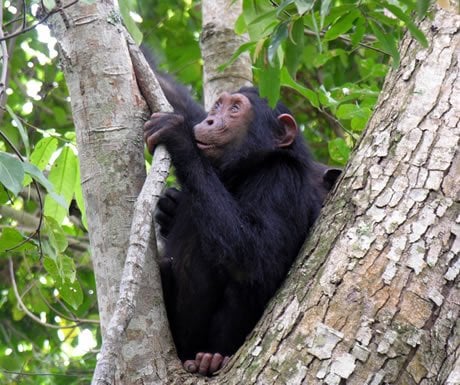 Around 1,000 chimpanzees are found in the expanse of trees, making this the best place to see them in the whole of Africa. Living in troops, theyre some of the continents only survivors in the wild.
One of the troops, while still wild, has been habituated to humans. You can head out with a guide to track it, hiking through the forest along sloping tracks until you hear chimpanzees calls. You then spend time observing them grooming, drinking and playing, as you crouch just a short distance away.
The park is only accessible by charter flight, after which youll take a boat to your camp. Very few permits for tracking the chimpanzees are available each year, so the whole experience feels exclusive and intimate.
The proximity of the lake also means you can spend time on the beach, go kayaking or snorkel amongst the hundreds of cichlid fish living in the water.
Craig Burkinshaw is Founder of Audley Travel.
If you would like to be a guest blogger on A Luxury Travel Blog in order to raise your profile, please contact us.
Around 1,000 chimpanzees are found in the expanse of trees, making this the best place to see them in the whole of Africa. Living in troops, theyre some of the continents only survivors in the wild.
One of the troops, while still wild, has been habituated to humans. You can head out with a guide to track it, hiking through the forest along sloping tracks until you hear chimpanzees calls. You then spend time observing them grooming, drinking and playing, as you crouch just a short distance away.
The park is only accessible by charter flight, after which youll take a boat to your camp. Very few permits for tracking the chimpanzees are available each year, so the whole experience feels exclusive and intimate.
The proximity of the lake also means you can spend time on the beach, go kayaking or snorkel amongst the hundreds of cichlid fish living in the water.
Craig Burkinshaw is Founder of Audley Travel.
If you would like to be a guest blogger on A Luxury Travel Blog in order to raise your profile, please contact us.Did you enjoy this article?
Receive similar content direct to your inbox.


I just love Kilimanjaro. The scenery at the peak is breathtaking, with the huge glaciers forming a heavenly white landscape. To make this an even more desirable destination, the region around the base of Mount Kilimanjaro is home to some of Africas premier wildlife parks and reserves, so it is easy to see why a visit to Kili is indeed a Tanzania must-do.